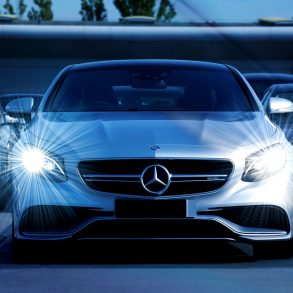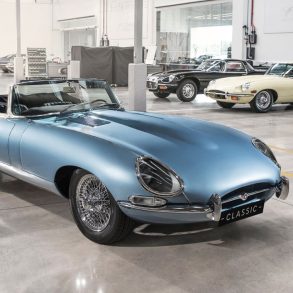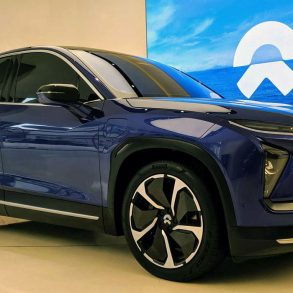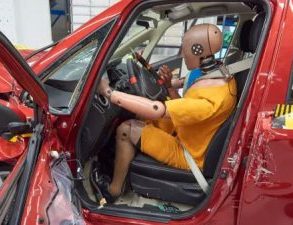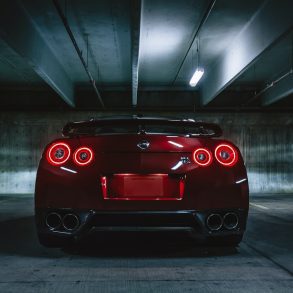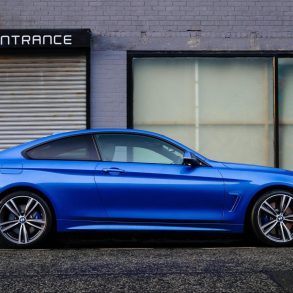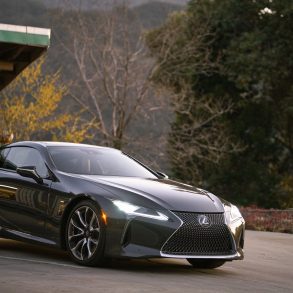This is our fourth and (for now) final installment in our series on cars that survived their original production life-cycle by being sold to Chinese auto makers who gratefully will continue production until eternity. Also read part 1 about the Seat Toledo I, Seat Ibiza I, MG ZT, MG TF, Rover Streetwise and LDV Maxus, part 2 about the Volkswagen Jetta, Audi 100, Daihatsu Move and Austin Maestro/Montego and part 3 about the Suzuki Alto, Daihatsu Terios, Fiat Palio/Siena, Fiat Multipla and Lancia Lybra. If you know of any other models that would fit this list, please let me know!
Jeep Cherokee XJ (1984-2001) -> BAW Qishi (2009-2013)
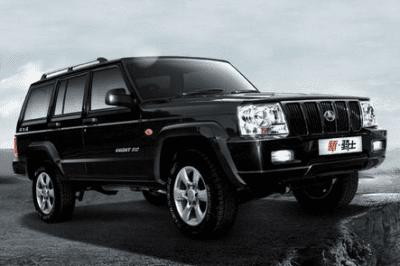 The oldest Joint Venture between a Chinese manufacturer and a foreign auto maker is that between American Motors and Beijing Auto Works, which was established in 1983, making the Jeep Cherokee XJ in China, starting in 1985. When Chrysler took control of AMC, the Chinese JV fell into their lap, and it even continued after the merger with Daimler. US production of the Cherokee ended in 2001, but production in China continued until 2007. A few years earlier, Beijing Jeep Corporation had bought the production line for the Jeep Grand Cherokee WJ which ended US production in 2004. Chinese production of the Grand Cherokee started in 2006 and lasted only that year, when DaimlerChrysler decided to drop local production of the two Cherokee models as SUVs made up only 5% of the market at that time, while sedans took 90%. They started Chinese production of the Chrysler 300C instead, followed by the Sebring in 2007. The two models suffered from slow sales and when DaimlerChrysler split up again later that year, Daimler held on to the partnership with BAIC, pulling the plug out of Chrysler production in China, leaving Chrysler in the wind. Eventually Fiat bought Chrysler out of its bankruptcy and included the American brand in its manufacturing Joint Venture with GAC, starting production of the new generation Jeep Cherokee at the end of 2015.
The oldest Joint Venture between a Chinese manufacturer and a foreign auto maker is that between American Motors and Beijing Auto Works, which was established in 1983, making the Jeep Cherokee XJ in China, starting in 1985. When Chrysler took control of AMC, the Chinese JV fell into their lap, and it even continued after the merger with Daimler. US production of the Cherokee ended in 2001, but production in China continued until 2007. A few years earlier, Beijing Jeep Corporation had bought the production line for the Jeep Grand Cherokee WJ which ended US production in 2004. Chinese production of the Grand Cherokee started in 2006 and lasted only that year, when DaimlerChrysler decided to drop local production of the two Cherokee models as SUVs made up only 5% of the market at that time, while sedans took 90%. They started Chinese production of the Chrysler 300C instead, followed by the Sebring in 2007. The two models suffered from slow sales and when DaimlerChrysler split up again later that year, Daimler held on to the partnership with BAIC, pulling the plug out of Chrysler production in China, leaving Chrysler in the wind. Eventually Fiat bought Chrysler out of its bankruptcy and included the American brand in its manufacturing Joint Venture with GAC, starting production of the new generation Jeep Cherokee at the end of 2015.
Meanwhile, BAIC started production of the BAW Qishi (Chinese for Knight) in 2009, which was its own version of the Cherokee XJ, now with a five-slot grille and Nissan-sourced 4-cylinder engines. The Qishi was not very successful, which isn’t surprising considering it was based on a 25-year old design, no matter how good it was. A 2011 upgrade and rename to Qishi S12 didn’t help much.
Nissan X-Trail 2nd gen (2007-2013) -> Dongfeng Fengdu MX6 (2015-present)
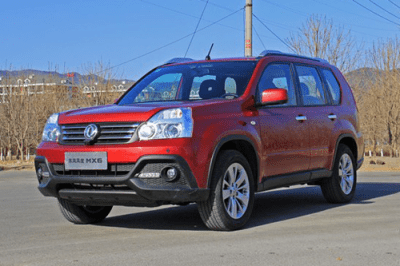 Nissan has been known to keep models that have been replaced in production for a while, to serve customers who might not need the latest model and have a smaller budget. Take for example the Nissan Rogue, the US version of the X-Trail: when the current generation was launched in November 2013, the previous version was renamed Rogue Select and sold for two more years alongside the new one. They even pulled this trick with its luxury brand Infiniti when the Q50 midsized sedan was launched in Q3 of 2013. The old generation G37 sedan was renamed Q40 and continued production until June 2015. This same strategy is now being played in China with Dongfeng.
Nissan has been known to keep models that have been replaced in production for a while, to serve customers who might not need the latest model and have a smaller budget. Take for example the Nissan Rogue, the US version of the X-Trail: when the current generation was launched in November 2013, the previous version was renamed Rogue Select and sold for two more years alongside the new one. They even pulled this trick with its luxury brand Infiniti when the Q50 midsized sedan was launched in Q3 of 2013. The old generation G37 sedan was renamed Q40 and continued production until June 2015. This same strategy is now being played in China with Dongfeng.
Dongfeng is Nissan’s Joint Venture partner in China, producing the Nissan models for the local Chinese market, including the X-Trail SUV. When the new generation X-Trail entered the market in March 2014, Dongfeng only needed to redesign the grille and come up with a name for their version of the outgoing version. This took them exactly one year, as the Dongfeng Fengdu MX6 was launched in March 2015. Just the grille and the logos have been changed from the X-Trail, even the engine is exactly the same 144 horsepower 2.0 liter unit that powered the Nissan. And one more difference: the old X-Trail sold for at least 207.800 yuan, while the starting price of the Fengdu MX6 is just 122.800 yuan, about 40% cheaper!
Hyundai Santa Fe I (2000-2006) -> Hawtai Shengdafei (2006-present)
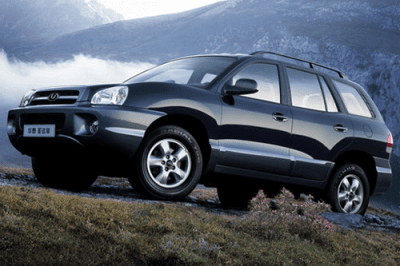 The first generation Hyundai Santa Fe has had a bit of a confusing history in China. The story starts in 2004, when JAC announced that it was negotiating with Hyundai to produce the Santa Fe for the Chinese market. That seemed like a logical cooperation, as JAC had previously acquired the technology to produce the Hyundai H1 MPV as the JAC Refine M1. However, it appears to have been wishful thinking, as Hyundai already had a cooperation with Huatai to produce the Terracan SUV and it would start production of the Santa Fe in 2006. A few years later, Hyundai gave them permission to use their own Huatai brand logo on these cars, which adds to the confusion as now the same model was sold under two different brands, even though they rolled off the same assembly line. The big difference was that Huatai didn’t get the rights to use the Hyundai engines, so they struck a deal with SAIC Motor to use the MG-Rover 1.8 liter turbo engine in the Hawtai Shengdafei (Chinese for Santa Fe). As you can see, in the meantime the English translation of the brand name had miraculously changed to Hawtai.
The first generation Hyundai Santa Fe has had a bit of a confusing history in China. The story starts in 2004, when JAC announced that it was negotiating with Hyundai to produce the Santa Fe for the Chinese market. That seemed like a logical cooperation, as JAC had previously acquired the technology to produce the Hyundai H1 MPV as the JAC Refine M1. However, it appears to have been wishful thinking, as Hyundai already had a cooperation with Huatai to produce the Terracan SUV and it would start production of the Santa Fe in 2006. A few years later, Hyundai gave them permission to use their own Huatai brand logo on these cars, which adds to the confusion as now the same model was sold under two different brands, even though they rolled off the same assembly line. The big difference was that Huatai didn’t get the rights to use the Hyundai engines, so they struck a deal with SAIC Motor to use the MG-Rover 1.8 liter turbo engine in the Hawtai Shengdafei (Chinese for Santa Fe). As you can see, in the meantime the English translation of the brand name had miraculously changed to Hawtai.
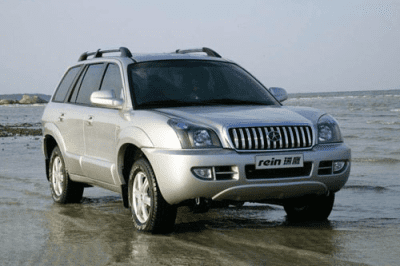 JAC wasn’t easily put off, as they just continued to copy the Santa Fe design and launch the JAC S1 Rein in 2007, which had minor changes to the exterior design, but undercut the Hawtai’s price. Two employees of Hyundai were sued that year when the company found out they had sold information on the Sonata transmission system and on exterior designs and parts designs to JAC. The cooperation between Hawtai and Hyundai also ended in 2010, leaving the Chinese brand without a partner. They continued to produce the Shengdafei and even launched another SUV on that same platform, the B35 Boliger. An all-new version of the Shengdafei was introduced at the end of 2014, aptly named New Shengdafei. Hyundai introduced the latest generation Santa Fe in China in 2012, produced by its Joint Venture with BAIC, which already manufactured the passenger cars for the South-Korean auto maker.
JAC wasn’t easily put off, as they just continued to copy the Santa Fe design and launch the JAC S1 Rein in 2007, which had minor changes to the exterior design, but undercut the Hawtai’s price. Two employees of Hyundai were sued that year when the company found out they had sold information on the Sonata transmission system and on exterior designs and parts designs to JAC. The cooperation between Hawtai and Hyundai also ended in 2010, leaving the Chinese brand without a partner. They continued to produce the Shengdafei and even launched another SUV on that same platform, the B35 Boliger. An all-new version of the Shengdafei was introduced at the end of 2014, aptly named New Shengdafei. Hyundai introduced the latest generation Santa Fe in China in 2012, produced by its Joint Venture with BAIC, which already manufactured the passenger cars for the South-Korean auto maker.
Mitsubishi Pajero 2nd gen (1991-1999) -> Changfeng Cheetah Black King Kong (2003-2015) -> Leopaard Q6 (2015-present)
and
Mitsubishi Pajero iO / Pinin (1998-2007) -> Changfeng Liebao Feiteng (2009-2015)
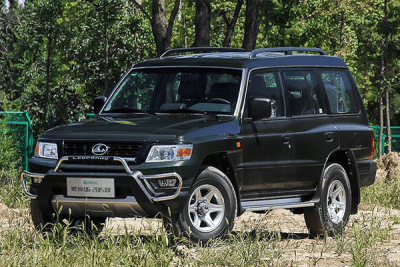 The second generation Mitsubishi Pajero (aka Montero and Shogun in some countries) has been produced since 1995 by Changfeng Motor, in which the Japanese company had held a stake since the mid-1980’s. Before that time it had been a commercial subsidiary of the People’s Liberation Army, also the biggest customer of Changfeng SUVs. In 2001 the PLA transferred its ownership to the government of Hunan province, who listed it on the Shanghai stock exchange in 2004, while remaining its largest shareholder, with Mitsubishi in second place. By this time, Changfeng had started to produce versions of the 2nd gen Pajero under its own brand as well, named the Changfeng Liebao Heijinggang (Cheetah/Leopard Black King Kong).
The second generation Mitsubishi Pajero (aka Montero and Shogun in some countries) has been produced since 1995 by Changfeng Motor, in which the Japanese company had held a stake since the mid-1980’s. Before that time it had been a commercial subsidiary of the People’s Liberation Army, also the biggest customer of Changfeng SUVs. In 2001 the PLA transferred its ownership to the government of Hunan province, who listed it on the Shanghai stock exchange in 2004, while remaining its largest shareholder, with Mitsubishi in second place. By this time, Changfeng had started to produce versions of the 2nd gen Pajero under its own brand as well, named the Changfeng Liebao Heijinggang (Cheetah/Leopard Black King Kong).
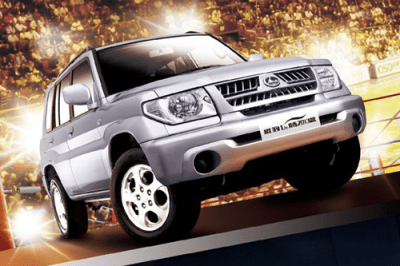 In 2009, GAC took a 29% share in the company, with Changfeng Group (22%) and Mitsubishi (15%) as the other minority shareholders. It also started production of the Changfeng Liebao Feiteng, a Mitsubishi Pajero iO (aka Pinin), which it had produced under the Mitsubishi name for the Chinese market from 2004 to 2007. In 2011 GAC took full ownership of Changfeng and unlisted it from the stock exchange. Then in 2012 GAC and Mitsubishi announced the formation of a Joint Venture to produce the ASX small crossover and the new generation Pajero SUV in the former Changfeng factory.
In 2009, GAC took a 29% share in the company, with Changfeng Group (22%) and Mitsubishi (15%) as the other minority shareholders. It also started production of the Changfeng Liebao Feiteng, a Mitsubishi Pajero iO (aka Pinin), which it had produced under the Mitsubishi name for the Chinese market from 2004 to 2007. In 2011 GAC took full ownership of Changfeng and unlisted it from the stock exchange. Then in 2012 GAC and Mitsubishi announced the formation of a Joint Venture to produce the ASX small crossover and the new generation Pajero SUV in the former Changfeng factory.
Meanwhile, production of both Liebao models continued, and in 2014 GAC retired the Changfeng brand name and started to call the brand Leopaard (that’s right, with two a’s), the English translation of Liebao (Cheetah/Leopard). Sales of the Liebao Feiteng and the Liebao Heijingang ended in 2015, but the brand replaced the latter with the Leopaard Q6, still bearing a close resemblance to the 1991 Pajero, and dirt-cheap for an SUV this size (starting at 146.800 yuan, or about US$ 23.500).
Mitsubishi Lancer (1995-2000) -> Soueast Lioncel (2003-2009) -> Soueast V3 Lingyue (2009-present)
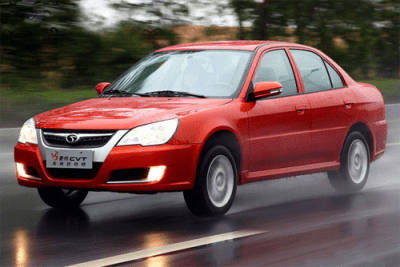 Besides the Changfeng/GAC Joint Venture, Mitsubishi has another JV in China since 2006, when it bought a 25% ownership stake in South East (Fujian) Motor Co., which markets the SouEast brand with Mitsubishi-based models and produces Mitsubishi’s passenger cars for the Chinese market. Another 25% of SouEast is owned by China Motor Corporation from Taiwan (also 15% owned by Mitsubishi) and the other half by Fujian Motors. Since 2006, SouEast has produced the fifth generation Mitsubishi Lancer (the 1995-2003 Mirage-based model), which had also been produced in Taiwan by China Motor. It was marketed as the SouEast Lioncel (phonetically similar to Lancer), until Mitsubishi switched the model back to its own brand in 2006. A newer generation is produced and sold alongside that model as the Lancer EX since 2009. However, when the Lioncel was discontinued for the SouEast brand, it was replaced a slightly updated version called the V3 Lingyue in 2009, which also continues production today. That means that as of 2016, two different versions of the 1995 Lancer are still being produced and sold in China, one by Mitsubishi themselves, looking exactly like it did 20 years ago, and one by SouEast, which looks a bit more modern and therefore outsold its original rival by a 10-to-1 ratio from 2013 to 2015, although a cheaper price may have helped as well.
Besides the Changfeng/GAC Joint Venture, Mitsubishi has another JV in China since 2006, when it bought a 25% ownership stake in South East (Fujian) Motor Co., which markets the SouEast brand with Mitsubishi-based models and produces Mitsubishi’s passenger cars for the Chinese market. Another 25% of SouEast is owned by China Motor Corporation from Taiwan (also 15% owned by Mitsubishi) and the other half by Fujian Motors. Since 2006, SouEast has produced the fifth generation Mitsubishi Lancer (the 1995-2003 Mirage-based model), which had also been produced in Taiwan by China Motor. It was marketed as the SouEast Lioncel (phonetically similar to Lancer), until Mitsubishi switched the model back to its own brand in 2006. A newer generation is produced and sold alongside that model as the Lancer EX since 2009. However, when the Lioncel was discontinued for the SouEast brand, it was replaced a slightly updated version called the V3 Lingyue in 2009, which also continues production today. That means that as of 2016, two different versions of the 1995 Lancer are still being produced and sold in China, one by Mitsubishi themselves, looking exactly like it did 20 years ago, and one by SouEast, which looks a bit more modern and therefore outsold its original rival by a 10-to-1 ratio from 2013 to 2015, although a cheaper price may have helped as well.
Honorable mention: Saab 9-3 (2003-2014) -> NEVS / BAIC Senova brand
The post-bankruptcy story of Swedish car brand Saab is a long one, worth an article on its own. But in the spirit of our current subject, we can still share some interesting details about the post-retirement life of the Saab 9-3, which was split into two different directions, none of which has the rights to use the Saab name.
The most recognizable resurrection of the 9-3 is from NEVS (National Electric Vehicle Sweden), which owns the Trollhättan factory and has Chinese shareholders. It bought the assets from the bankrupt Saab and restarted a limited production run of the 9-3 at the end of 2013, the biggest difference being that it no longer carried the Saab brand and logo, which were not part of the acquisition. Since the model no longer met the EuroNCAP crash standards, its production for the European market was limited to 1.000 units per body style. After this, the company made plans to develop an electric car with the body of the 9-3, which would sold exclusively in China. Late 2015, NEVS announced it had reached an agreement to supply 150.000 9-3 EVs until 2020 to Panda New Energy, a Chinese car leasing company that specializes in alternative power vehicles. It is still unknown when production of the vehicles will start.
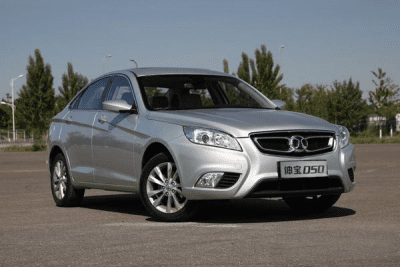 A second Chinese revival of the Saab 9-3 genes is with the Senova brand from Beijing Auto. In 2009, BAIC Motor acquired the rights to the Saab 9-3 and the first generation Saab 9-5 from General Motors, including the 2.0 and 2.3 liter turbo four-cylinder engines, developed by Saab. The sale also included the rights to the Chinese name for Saab: Shenbao, which translates to English as Senova, but not the rights to the Swedish Saab brand. A derivative of the platform of the 9-3 underpins most of the sedans and crossovers sold under the Senova brand, including the D50, D50EV, X55 and X65, while the D20 and X25 are based on the Mitsubishi Colt/Smart Forfour platform and the D70 and D80 on the first generation Saab 9-5 platform. As you see, recycling of old platforms is even more common in China than the resurrection of entire models under a different brand. No platform ever has to die in China, there’s always a smaller, less advanced player willing to take over the outdated technology and continue to use it to build their own models.
A second Chinese revival of the Saab 9-3 genes is with the Senova brand from Beijing Auto. In 2009, BAIC Motor acquired the rights to the Saab 9-3 and the first generation Saab 9-5 from General Motors, including the 2.0 and 2.3 liter turbo four-cylinder engines, developed by Saab. The sale also included the rights to the Chinese name for Saab: Shenbao, which translates to English as Senova, but not the rights to the Swedish Saab brand. A derivative of the platform of the 9-3 underpins most of the sedans and crossovers sold under the Senova brand, including the D50, D50EV, X55 and X65, while the D20 and X25 are based on the Mitsubishi Colt/Smart Forfour platform and the D70 and D80 on the first generation Saab 9-5 platform. As you see, recycling of old platforms is even more common in China than the resurrection of entire models under a different brand. No platform ever has to die in China, there’s always a smaller, less advanced player willing to take over the outdated technology and continue to use it to build their own models.

